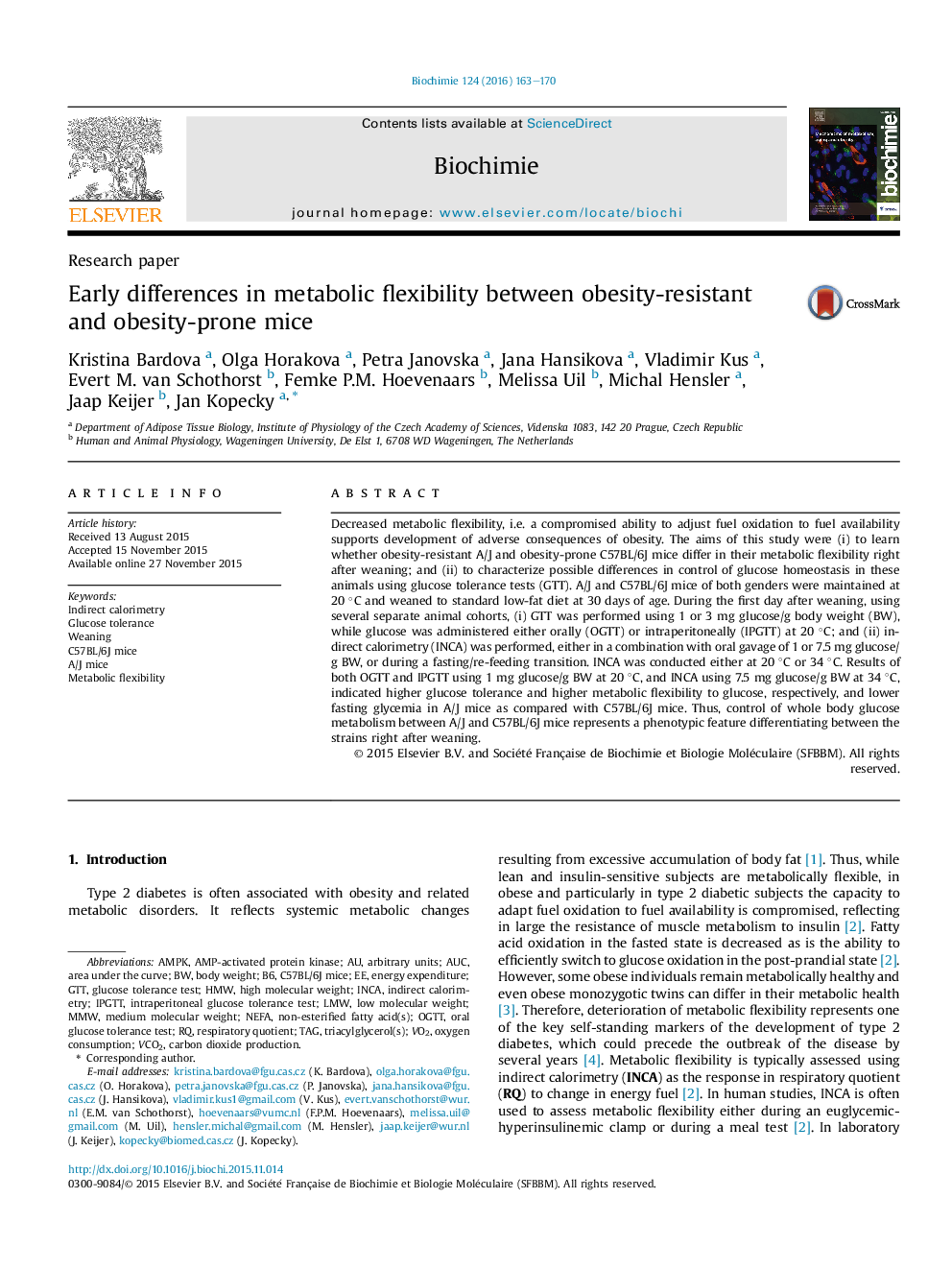| Article ID | Journal | Published Year | Pages | File Type |
|---|---|---|---|---|
| 1951957 | Biochimie | 2016 | 8 Pages |
•Mice of A/J and C57BL/6J strains differ in metabolic flexibility at weaning.•A/J mice display higher glucose tolerance and metabolic flexibility.•Indirect calorimetry and glucose tolerance test could reveal the early differences.
Decreased metabolic flexibility, i.e. a compromised ability to adjust fuel oxidation to fuel availability supports development of adverse consequences of obesity. The aims of this study were (i) to learn whether obesity-resistant A/J and obesity-prone C57BL/6J mice differ in their metabolic flexibility right after weaning; and (ii) to characterize possible differences in control of glucose homeostasis in these animals using glucose tolerance tests (GTT). A/J and C57BL/6J mice of both genders were maintained at 20 °C and weaned to standard low-fat diet at 30 days of age. During the first day after weaning, using several separate animal cohorts, (i) GTT was performed using 1 or 3 mg glucose/g body weight (BW), while glucose was administered either orally (OGTT) or intraperitoneally (IPGTT) at 20 °C; and (ii) indirect calorimetry (INCA) was performed, either in a combination with oral gavage of 1 or 7.5 mg glucose/g BW, or during a fasting/re-feeding transition. INCA was conducted either at 20 °C or 34 °C. Results of both OGTT and IPGTT using 1 mg glucose/g BW at 20 °C, and INCA using 7.5 mg glucose/g BW at 34 °C, indicated higher glucose tolerance and higher metabolic flexibility to glucose, respectively, and lower fasting glycemia in A/J mice as compared with C57BL/6J mice. Thus, control of whole body glucose metabolism between A/J and C57BL/6J mice represents a phenotypic feature differentiating between the strains right after weaning.
